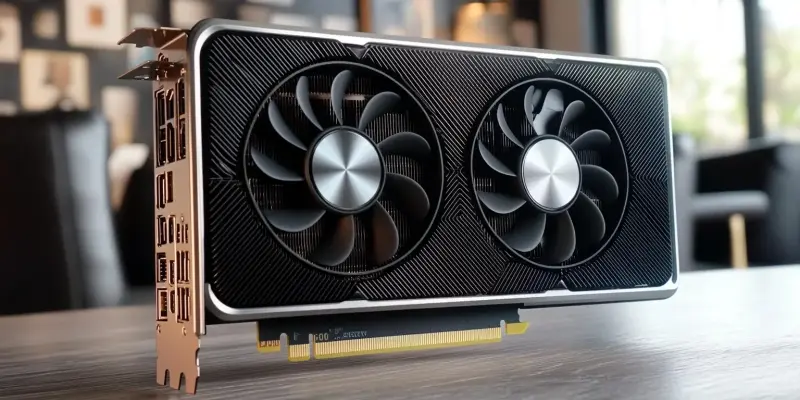With the upcoming update to MSI Afterburner specifically tailored for the new GeForce RTX 50 series GPUs, enthusiasts and tech aficionados are abuzz with excitement. This software update, designed to offer independent fan control, is set to debut with the highly anticipated GeForce RTX 5080. For the first time, users will be able to manage the three individual fans on their RTX 5080, setting different speeds and curves for each fan. This feature is expected to significantly enhance cooling efficiency and noise control, providing a more customizable and efficient gaming experience. Alexey Nicolaychuk, the original creator of Afterburner, confirmed this innovative feature on the Guru3D forums, pointing out a new button that allows for asynchronous fan speed control of the third fan.
Historically, MSI’s fan control options have been somewhat limited; the existing ‘Fan Sync’ option only caters to dual-fan GPUs. The forthcoming update revolutionizes this aspect by extending control to triple-fan setups, starting explicitly with the MSI GeForce RTX 5080 GAMING TRIO model. This new capability is likely to be embraced by other NVIDIA board partners over time, enhancing the cooling systems of their triple-fan designs as well. The RTX 5080, featuring a robust configuration with 10752 CUDA Cores, 16 GB of GDDR7 VRAM, and a TDP of 360W, is set to redefine gaming performance and thermal management. It will be officially released on January 6, with a retail launch anticipated on January 21.
Independent Fan Control Mechanisms
The introduction of independent fan control mechanisms in the MSI Afterburner software marks a significant advancement in GPU management tools. With this new feature, users can individually adjust and tailor the speed of each of the three fans on their RTX 5080, achieving optimal cooling efficiency based on their specific needs and operating conditions. This granular level of control empowers users to minimize noise while maximizing cooling performance, addressing both thermal and acoustic concerns. Such an approach not only allows for a smoother and quieter gaming experience but also extends the longevity of the GPU by maintaining optimal temperatures.
Moreover, this update underscores MSI’s commitment to enhancing the user experience and staying at the forefront of technology development. By offering this degree of control, MSI enables enthusiasts to extract the utmost performance from their GPUs, whether in gaming, heavy computational tasks, or high-end graphics workloads. This capability is particularly beneficial for users who demand consistent and reliable performance under different operating conditions, such as varying ambient temperatures or system loads. The ability to adjust fan speeds in real-time, dynamically responding to changes in GPU usage, ensures that the new RTX 5080 can handle even the most intensive tasks with ease.
Enhanced Cooling and Performance
Excitement is building among tech enthusiasts with the upcoming MSI Afterburner update for the new GeForce RTX 50 series GPUs. This eagerly awaited software update, tailored for the GeForce RTX 5080, will introduce independent fan control, allowing users to manage the three individual fans separately. For the first time, users can set different speeds and fan curves for each fan on their RTX 5080, significantly boosting cooling efficiency and noise reduction. This customization offers a more tailored and efficient gaming experience.
Alexey Nicolaychuk, Afterburner’s original creator, confirmed this feature on the Guru3D forums and highlighted a new button for asynchronous control of the third fan. Previously, MSI’s fan control was limited, with the ‘Fan Sync’ option supporting only dual-fan GPUs. This update revolutionizes fan control for triple-fan setups, starting with the MSI GeForce RTX 5080 GAMING TRIO model. This enhanced cooling system is expected to be adopted by other NVIDIA board partners, enhancing performance in their triple-fan designs.
The RTX 5080 boasts 10752 CUDA Cores, 16 GB of GDDR7 VRAM, and a 360W TDP, redefining gaming performance and thermal management. The official release is slated for January 6, with a retail launch expected on January 21.

